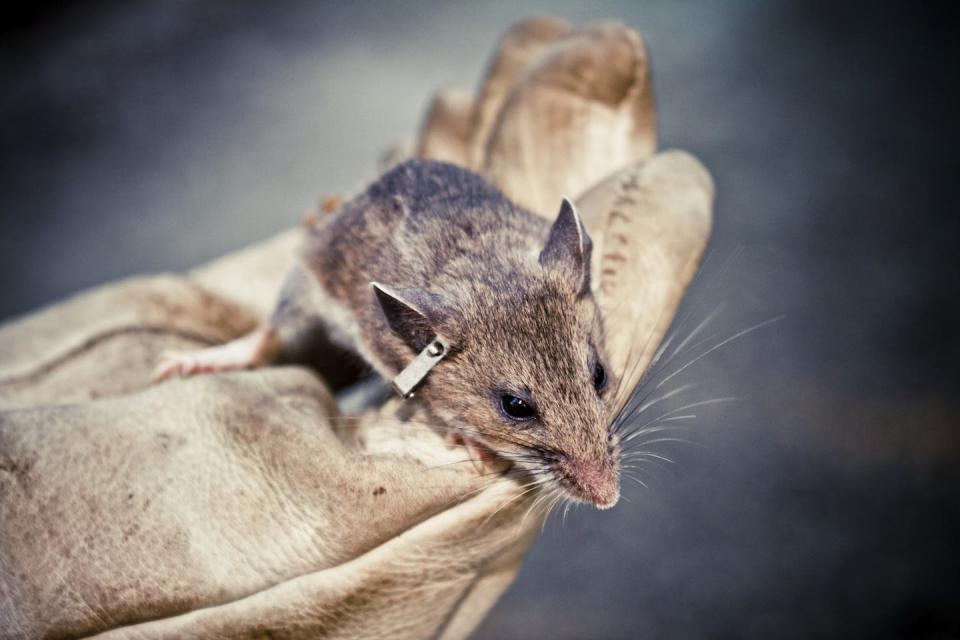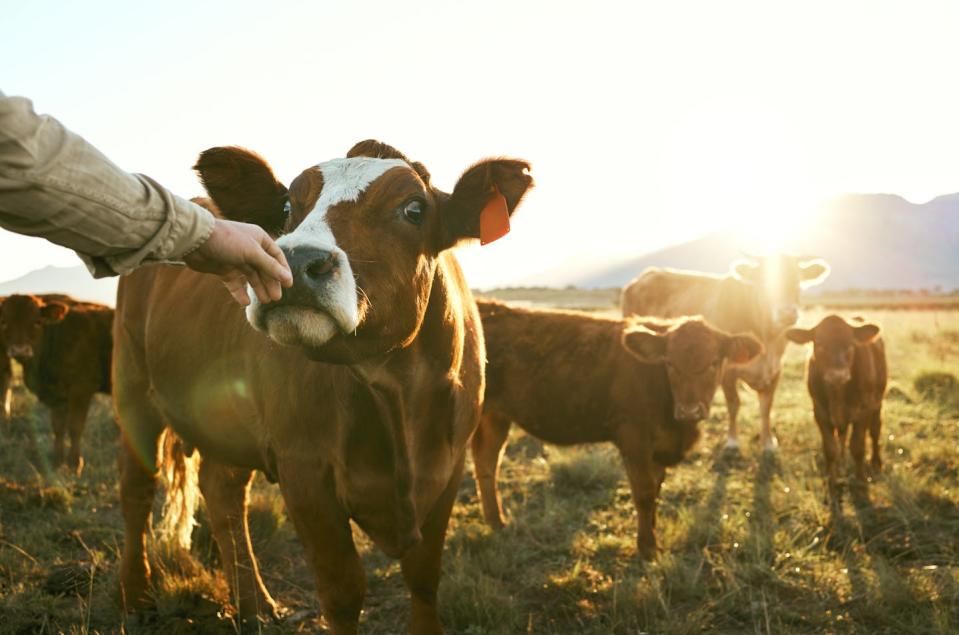When the World Health Organization declared COVID-19 a pandemic on March 11, 2020, humans were the only species with reported cases of the disease. Although early genetic analyses pointed to horseshoe bats as the evolutionary hosts of SARS-CoV-2, the virus that causes COVID-19, no reports had yet surfaced suggesting it could be transmitted from humans to other species.
Less than two weeks later, a report from Belgium marked the first infection in a domestic cat—presumably by its owner. In the summer of 2020, there were news of COVID-19 outbreaks and subsequent culls on mink farms across Europe, and fears of similar calls for culls in North America. People and other animals on and around mink farms tested positive, raising questions about the possibility of a secondary reservoir of COVID-19 in wildlife. That is, the virus could infect a different species and start a transmission cycle beyond the one in which it originated.
Researchers have documented this phenomenon of human-to-animal transmission, commonly called spillback or reverse zoonotic transmission, in both domestic and wild animals. Wild animals can be infected directly by people or indirectly by domestic animals infected by people. This stepping-stone effect provides new opportunities for pathogens to evolve and can radically change how they spread, as seen with influenza and tuberculosis.
For example, spillback has long been a threat to endangered great apes, even among populations with little human contact. The chimpanzees of Gombe National Park, made famous by the work of Jane Goodall, have suffered from outbreaks of measles and other respiratory diseases, likely due to the persistence of pathogens in the environment, spread by people living nearby or by ecotourists.
We are researchers who study the mechanisms that drive disease transmission between species and how diseases impact both wildlife and human conservation. Emerging outbreaks have highlighted the importance of understanding how threats to wildlife health influence the emergence and spread of zoonotic pathogens. Our research suggests that looking at historical outbreaks can help predict and prevent the next pandemic.
There has been talk of spillback before
Our research group wanted to assess how often spillback had been reported in the years leading up to the COVID-19 pandemic. A retrospective analysis not only allows us to identify specific trends or barriers to reporting spillback events, but also helps us understand where new emerging threats are most likely to occur.
We examined historical spillback events involving diverse groups of pathogens across the animal kingdom, accounting for variations in geography, methods, and sample sizes. We synthesized scientific reports of spillback spanning nearly a century before the COVID-19 pandemic—from the 1920s to 2019—encompassing diseases ranging from salmonella and intestinal parasites to human tuberculosis, influenza, and polio.
We were also interested in determining whether detection and reporting biases might influence what is known about human-to-animal transmission of pathogens. Charismatic megafauna—often defined as larger mammals such as pandas, gorillas, elephants, and whales that evoke emotions in people—are overrepresented in epidemiology and wildlife conservation efforts. They receive more public attention and funding than smaller and less visible species.
Complicating matters further is the difficulty of monitoring wild populations of small animals, as they decompose quickly and are often eaten by larger animals. This drastically reduces the time frame in which researchers can investigate outbreaks and collect samples.

The results of our historical analysis support our suspicions that most reports describe outbreaks in large charismatic megafauna. Many were captive, such as in zoos or rehabilitation centers, or semi-captive, such as well-studied great apes.
Despite the litany of published papers on novel pathogens discovered in bats and rodents, the number of studies on pathogens transmitted from humans to these animals has been small. However, small mammals that occupy diverse ecological niches, including animals that live near human habitations—such as deer mice, rats, and skunks—may not only share pathogens with humans but also be more likely to be infected by human pathogens.
COVID-19 and pandemic flu
In our historical analysis of spillback before the COVID-19 pandemic, the only evidence we found to support the establishment of a human pathogen in a wildlife population was two 2019 reports describing H1N1 infection in striped skunks. Like coronaviruses, influenza A viruses like H1N1 are adept at switching hosts and can infect a wide range of species.
Unlike coronaviruses, however, their widespread transmission is facilitated by migratory waterfowl such as ducks and geese. Exactly how these skunks became infected with H1N1 and for how long remains unclear.
Shortly after we completed the analysis for our study, reports emerged in November 2021 of widespread COVID-19 infection in white-tailed deer across North America. In some areas, the prevalence of infection was as high as 80%, despite little evidence of disease in the deer.
This ubiquitous mammal has effectively become a secondary reservoir of COVID-19 in North America. What’s more, genetic evidence suggests that SARS-CoV-2 evolves three times faster in white-tailed deer than in humans, potentially increasing the risk of seeding new variants in humans and other animals. There is already evidence of deer-to-human transmission of a previously unseen variant of COVID-19.
There are more than 30 million white-tailed deer in North America, many of which are in agricultural and suburban areas. Surveillance efforts to monitor viral evolution in white-tailed deer can help identify emerging variants and further transmission from deer populations to people or domestic animals.
Studies of related species have shown that the risk of spillback varies. For example, white-tailed deer and mule deer are highly susceptible to COVID-19 in the lab, while elk are not.
H5N1 and the US dairy herd
Since 2022, the spread of H5N1 has affected a wide range of bird and mammal species around the world – foxes, skunks, raccoons, opossums, polar bears, coyotes, and seals, to name a few. Some of these populations are endangered, and aggressive surveillance efforts to monitor the spread of the virus are underway.
Earlier this year, the U.S. Department of Agriculture reported the presence of H5N1 in the milk of dairy cows. Genetic analysis suggests the virus was introduced into cows as early as December 2023, likely in the Texas Panhandle. Since then, it has affected 178 herds in 13 states (as of August 2024).
How the virus entered dairy cow populations has not yet been determined, but it was likely through migrating waterfowl that were infected with the virus. Work is underway to map exactly how the virus moves between herds, although contaminated milking equipment, rather than aerosol transmission, appears to be the culprit.


Given the ability of influenza A viruses like avian influenza to infect a wide range of species, it is critical that surveillance efforts focus not only on dairy cows, but also on animals living on or around affected farms. Monitoring areas at high risk for cross-species transmission, such as where livestock, wildlife, and people interact, not only provides information about how widespread a disease is in a given population—in this case, dairy cows—but also allows researchers to identify susceptible species that come into contact with them.
To date, H5N1 has been detected in several animals found dead on affected dairy farms, including cats, birds, and a raccoon. As of August 2024, four people who had close contact with infected dairy cows have tested positive, one of whom developed respiratory symptoms. Other wild and domestic animals remain at risk. Similar surveillance efforts are underway to monitor the transmission of H5N1 from poultry to humans.
People are just one part of the network
The language often used to describe cross-species transmission fails to capture its complexity and nuances. Given the number of species infected with COVID-19 during the pandemic, many scientists have called for limiting the use of the terms spillover and spillback, as they describe the transmission of pathogens to and from humans. This suggests that disease and its implications begin and end in humans.
By viewing humans as one node in a large network of transmission opportunities, researchers can more effectively monitor COVID-19, H5N1, and other emerging zoonoses. This includes systems thinking approaches such as One Health or Planetary Health that capture human interdependence with the health of the total environment.
This article is republished from The Conversation, a nonprofit, independent news organization that brings you facts and reliable analysis to help you understand our complex world. It was written by: Anna Fagre, Colorado State University and Sadie Jane Ryan, University of Florida
Read more:
Anna Fagre receives funding from The National Science Foundation (NSF BII 2213854) and The National Institutes of Health (K01OD037645).
Sadie Jane Ryan receives funding from The National Science Foundation (NSF BII 2213854; DBI 2016265; CCE 2200140).